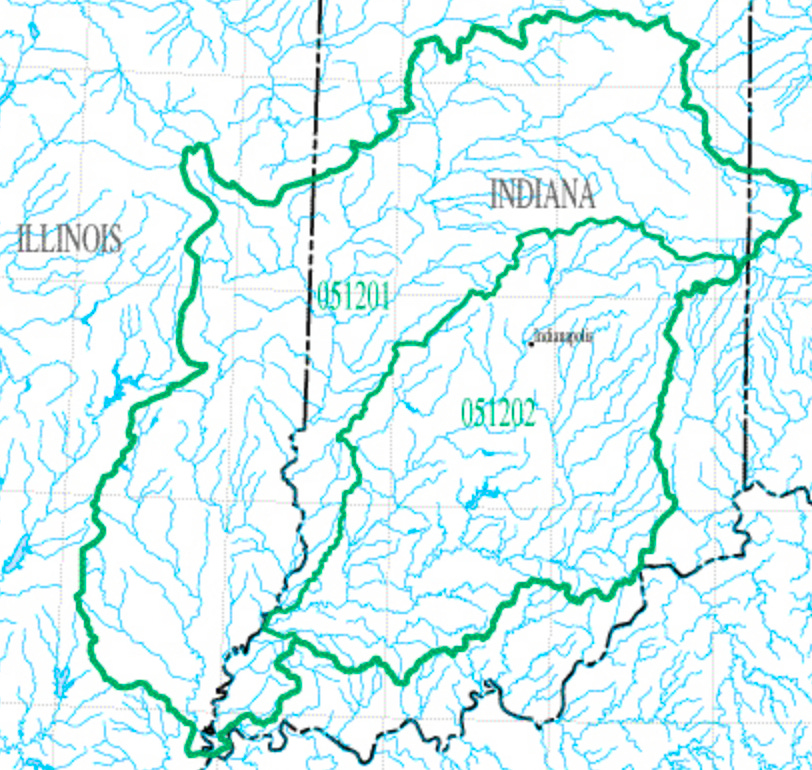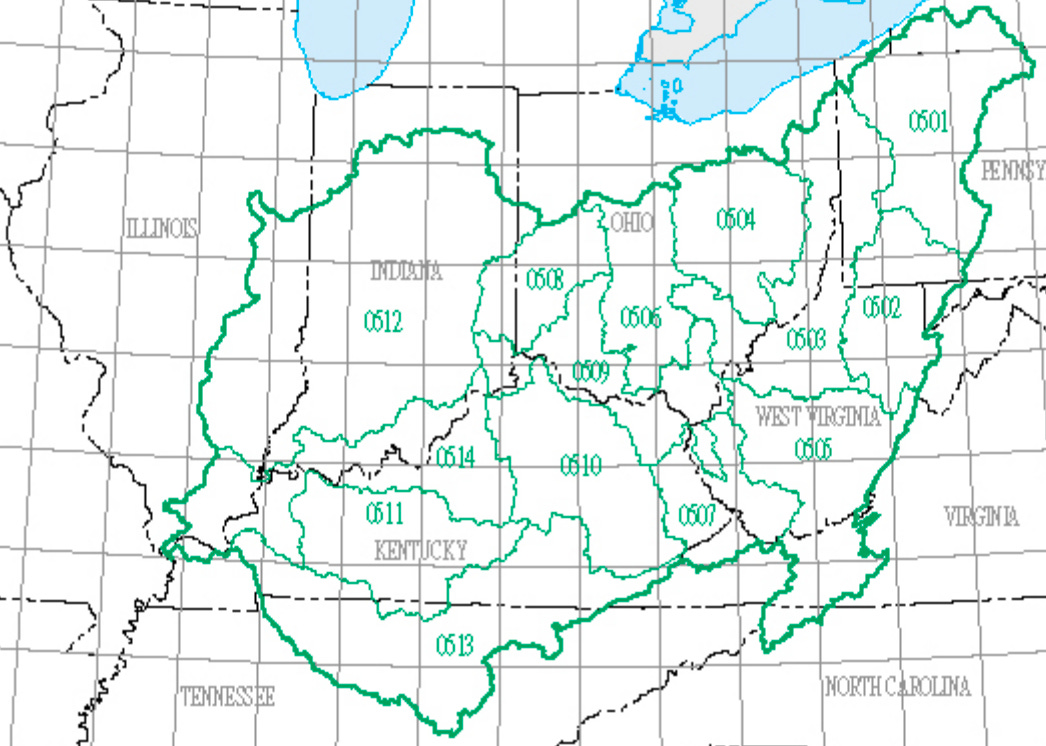Resilience
- Nation of Ohio
- State of Wabash
- County of Patoka-White
- City of Upper White
- Those who hoard guns and gold
- Those who plant seeds and share
- What is this work saying?
- How do I now feel?
- What will stick with me?
- What am I moved to do?
An Alternate Geography
I live in the:
Let’s reverse that order, starting with Upper White and zooming out:
Upper White:

Patoka-White:

Wabash:

Ohio:

Ohio and neighbors:

images sourced from: [https://water.usgs.gov/wsc/map_index.html](https://water.usgs.gov/wsc/map_index.html)
What are these?
These regions are “watersheds” or “drainage baisins”. They represent an area where all the water drains into one body (stream, river, lake, etc.).
In the USA, the numbers you see in the above images represent the 8-digit “HUC” or Hydrologic Unit Code. From my example, 05120201 represents Ohio (05), Wabash (12), Patoka-White (02), Upper White (01). As you can see, they are all named after the major river(s) of that region.
In addition to the 8-digit HUCs, there are also 12-digit HUCs, representing two additional layers of zoom-in and specificity. Using my proposed naming above, perhaps we could call these Townships and Neighborhoods.
What are mine?
In the USA, you can find your regions by progressively zooming in via this tool from the US Geological Survey. For each region, they also provide many linked resources.
To get even more specific, you can check your 12-digit HUC using the community water search from the EPA. This is also a great resource to see the quality of the water in your area, including the safety of swimming in it, the health of aquatic life in it, and the quality of your drinking water.
(Note: if you live outside the USA, please feel free to share in the comments how to look up watersheds where you live!)
Why does it matter?
As the saying goes: water is life. People, wildlife, and the entire ecology within a watershed are all part of the same stream of life.
In addition, ecological health is tied to financial health, and both are affected by community interactions and governance within the region. Their fate flows together.
Thus, the thought experiment of using the terms: Nation, State, County, City, Township, Neighborhood.
Political boundaries can often feel arbitrary, based on agreements or impositions that may have had very little to do with the people that actually live in the area (or were even contrary to their interests, such as in colonial situations).
But watersheds are based on shared life. Regardless of wealth, ethnicity, or other factors, people within a watershed have shared destiny.
So what?
What would it mean to think of our local watershed as our polity, our political unit?
Could we become better at seeing our neighbors as people in the same boat, rather than as enemies?
Could we more readily identify how systems are interacting?
Could it enable more long-term thinking, strategic thinking, thinking that considers not just the current moment but the impact to the financial, social, and ecological health of the region?
How is the health of your watershed? What might you do, knowing that?
You may have heard me talk about watersheds, before. In this post on Resilient, I share how to identify a watershed, and propose a thought experiment of considering watersheds as our political unit.

Sunday Quote

“While we are relieved that our church home mostly survived the inferno in the lot next door, we affirm that we would rather lose 100 buildings than one more life to police violence.”
Resilient: Landlord Tech Watch

The little joys of CSAs: I was excited about getting pears, today. He told me how the tree is over 100 years old and his great-grandmother planted it. Today’s recipe sheet also had instructions for his Grandma’s pear butter!


Canada’s last intact ice shelf breaks up
“Since 2007 the mean temperature in summer has flipped from below freezing to above it. The consequences will be felt far beyond the north.”
“I’m so sorry, but I’m avoiding shared indoor spaces unless it’s an emergency."

There are two kinds of preppers:
Be the second kind.

Yet another good reason to wear a mask: “Homeland Security fears widespread mask-wearing will break facial recognition software”. Help your fellow humans.
Added How to Invent Everything to my #Resilient booklist. 📚 I love this book so much. Informative and hilarious. ⭐️⭐️⭐️⭐️⭐️
As someone with an interest in insect protein (for issues of sustainability and ethics) this talk from the Long Now was very interesting to me. 🎙
I still have a ways to go, but did some good work on my Resilient booklist this morning.

Another great one from James Clear

Here’s a great podcast intro to Restorative Justice, includes shoutouts to Howard Zehr and Mennonites, which is, unsurprisingly, how I got introduced to the concept in a more concrete way.
Got my first CSA pickup, today. They said it started admittedly light so they are going to add a week at the end. Had peas, a couple types of onions, some greens, and a whole (pieced) chicken.
Questions to ask after finishing media:
